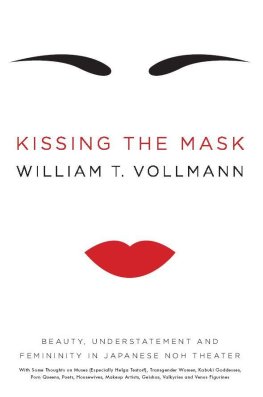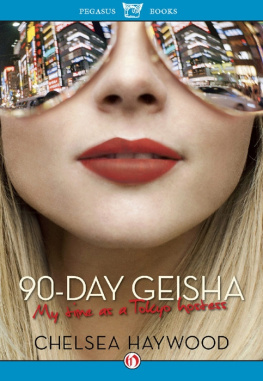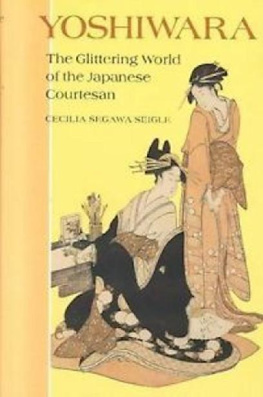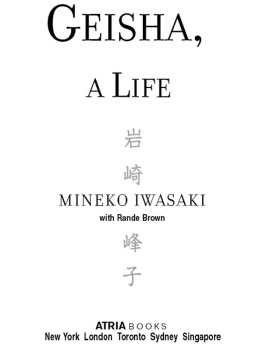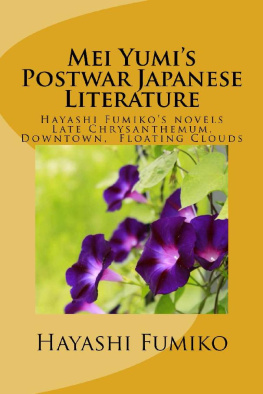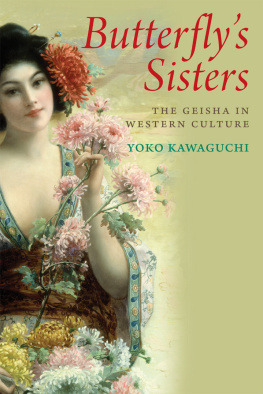GEISHAS
and the
FLOATING WORLD
Inside Tokyos
Yoshiwara
Pleasure District
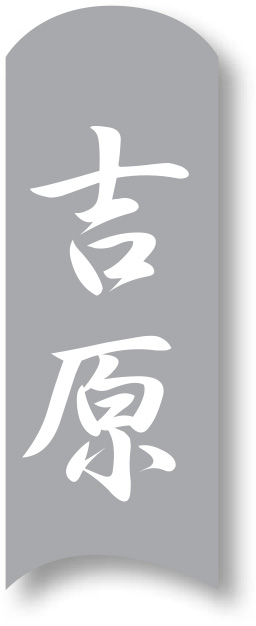
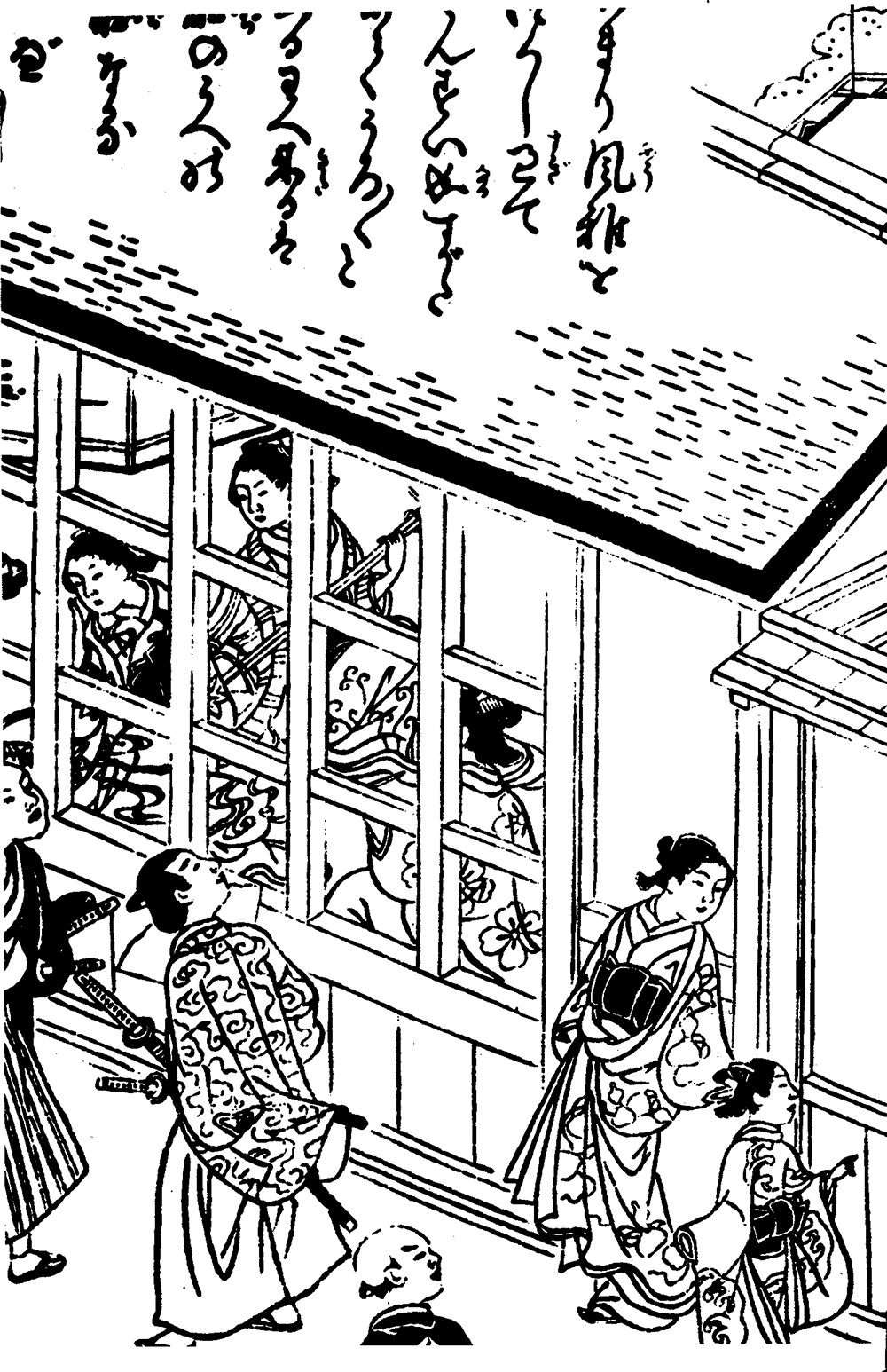
GEISHAS
and the
FLOATING WORLD
Inside Tokyos
Yoshiwara
Pleasure District
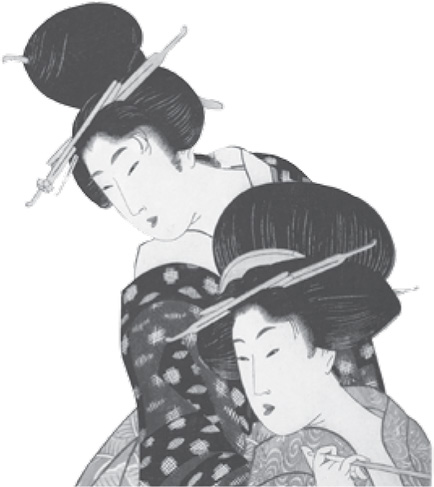
by Stephen and Ethel Longstreet
Introduction by Stephen Mansfield


Introduction
Stephen Mansfield
Rumors and superheated accounts of a licensed quarter, where the notions of sin and guilt were suspended in the perfection of advanced forms of sensuality inconceivable in the Judaic-Christian world, had been leaking out of Japan for a long time. The country, feudal in its thinking and structural apparatus, was not quite as hermetically sealed as it liked to think.
With droves of men relocating to the new, de facto capital of Edo (Tokyo) in search of work, a disproportionately male city provided a ready clientele for countless, largely unregulated brothels and bathhouses, the latter staffed by female attendants. Adopting the virtuous ruse that the best method to contain vice was to manage it, Jinemon Shoji, a successful brothel-keeper, presented a petition to the authorities to allow him to establish a legitimate yukaku, or pleasure quarter, one that, by concentrating the flesh trade into a single, easily administrated zone, would lead to the closing down of rival establishments and operations. Striking a suitably outraged tone, Jinemon complained that the unsupervised spread of houses of ill fame was to the detriment of public morality and welfare. Five years later his request was granted.
The site chosen by the authorities, a mephitic, mosquito-infested marshland to the east of Nihonbashi, was unpromising. Undaunted, Jinemon had the marsh drained, strong walls erected, and a circular moat dug. The prevalence of reeds and rushes lent the quarter its name: Yoshiwara, or Reed Moor. The dismal connotations of the name were addressed by altering a Chinese character and replacing it with an ideogram that could be read as Field of Good Fortune. The pronunciation of Yoshiwara remained the same.
Like much of Edo, the quarter, rebuilt several times, was the periodic victim of fires. An especially devastating conflagration, known as the Furisode Kaji, or Long-Sleeved Fire, razed the district in 1657, forcing its removal to an outlying area of Nihonzutsumi, a little north of Asakusas Senso-ji Temple. Edos interminable conflagrations and other natural calamities endorsed the notion of an indeterminate world, a place of melancholic, but intensely valued evanescence. Adapting the Buddhist concept of ukiyo, with its connotations of impermanence, the immateriality of an existence in which we all suffer, the idea of perpetual pain was extirpated by altering the written character to read floating world. In the pleasure quarter, this stood for unbridled joy. In the liberal milieu of the Yoshiwara, it was then up to writers and artists to interpret this new approach to life. Author Asai Ryoi did just that in his 1691 work, Tales of the Floating World, where he maintained that the true meaning of ukiyo, in the contemporary rendering, was caring little for the poverty facing us every day, refusing like a gourd floating with the river current, to be disheartened.
Ambivalent feelings about the realities of the flesh trade, its enslavement of young, vulnerable women, have been moderated in the modern age by the stunning works of art and popular literature the Yoshiwara inspired. With a character that was nothing if not theatrical, the quarter provided a vibrant stage for the citys cultural life, an immensely fertile ground for the work of artists, poets, novelists, dancers and musicians. The sybaritic practices of the quarter, the freedoms and social leveling that existed nowhere else, were driven by economic as much as cultural and sexual forces. By the end of the 17th century, the wealth of the merchants far exceeded their lowly social status. In an ironic inversion of the social order, an increasingly wealthy but despised class of traders was now the principal dispenser of largesse in the pleasure quarters, not the socially exalted but impoverished samurai.
As the district catered to all purses, few were turned away from the gates of the Yoshiwara. The impecunious could satisfy their urges in swift, sordid transactions that took place in soiled cribs flung down on reed mats; the affluent could take part in a re-enactment of scenes depicted by the woodblock print masters, participating in languorous, intricate preambles to lovemaking, forms of urbane cultural foreplay and intimacy that would linger until the first rays of morning light, and a gracious, formal parting.
The courtesans room, a microcosm of prevailing cultural tastes and artifacts, might include an elegant tea set, musical instruments like the koto and shamisen, choice pieces of ceramicware and calligraphy, and copies of erotic prints and love poems. Rarified cuisine was integral to the preliminaries at the higher-ranking houses. Rates depended on class. The most elite courtesans were the tayu and oiran, a proud and haughty sorority, followed by the koshi. Third, with decidedly less skills and refinement, were the tsubone. An even lower order of prostitutes and bathhouse girls were known as sancha. The geisha, a practitioner of the arts, whose trade was to ensnare men with her beauty and artistic skills, could refuse a client if he was not to her liking. She was never a prostitute. Often as accomplished as the geisha in song, dance, flower arrangement, the tea ceremony and her knowledge of literary trends, the upper reaches of courtesans might also, in some instances, wield power and influence through their relations with samurai and members of the nobility. The dressing and makeup rooms of the quarter were studios for the manufacturing of elaborate fantasies. They spared little expense in creating a vision of beauty that appeared to be inaccessible, enigmatic and elusive, but could be acquired if the requisite financial transactions were met.
Books on the fashions of the Yoshiwara have left detailed accounts. Camellia oil was applied to the face of a courtesan, a pink surface added as an undercoating before a finishing of white makeup. Drama was added to the ivory visage with the application of black, penciled eyebrows, rimmed with red, a color associated with the erotic. The mouth was painted a bright vermillion, the nape of the neck brushed with white masque. The vision was completed with extraordinary coiffures: black, lacquered wigs, bedizened with jeweled and tortoiseshell pins, and red combs sculpted from the beaks of the kingfisher. These mounted headpieces were similar to those worn by court ladies. Dyed kimonos were embroidered in silk and decorated with flowers and seasonal themes. Undergarments were made from claret- and scarlet-colored silk crepe and purple satin, edged with costly gold and silver thread. In this manner, women were re-created as works of art, figurines in a radiant gallery.
Next page

